第39章 2(2)
Again, since the division of the cloven hoof depends on deficiency of material, it is but rationally consistent, that nature, when she gave an animal an excess of material for the hoofs, which thus became solid, should have taken away something from the upper parts and so made the animal to have but one horn. Rightly too did she act when she chose the head whereon to set the horns; and AEsop's Momus is beside the mark, when he finds fault with the bull for not having its horns upon its shoulders. For from this position, says he, they would have delivered their blow with the greatest force, whereas on the head they occupy the weakest part of the whole body. Momus was but dull-sighted in making this hostile criticism. For had the horns been set on the shoulders, or had they been set on any other part than they are, the encumbrance of their weight would have been increased, not only without any compensating gain whatso::ver, but with the disadvantage of impeding many bodily operations. For the point whence the blows could be delivered with the greatest force was not the only matter to be considered, but the point also whence they could be delivered with the widest range. But as the bull has no hands and cannot possibly have its horns on its feet or on its knees, where they would prevent flexion, there remains no other site for them but the head; and this therefore they necessarily occupy. In this position, moreover, they are much less in the way of the movements of the body than they would be elsewhere.
Deer are the only animals in which the horns are solid throughout, and are also the only animals that cast them. This casting is not simply advantageous to the deer from the increased lightness which it produces, but, seeing how heavy the horns are, is a matter of actual necessity.
In all other animals the horns are hollow for a certain distance, and the end alone is solid, this being the part of use in a blow. At the same time, to prevent even the hollow part from being weak, the horn, though it grows out of the skin, has a solid piece from the bones fitted into its cavity. For this arrangement is not only that which makes the horns of the greatest service in fighting, but that which causes them to be as little of an impediment as possible in the other actions of life.
Such then are the reasons for which horns exist; and such the reasons why they are present in some animals, absent from others.
Let us now consider the character of the material nature whose necessary results have been made available by rational nature for a final cause.
In the first place, then, the larger the bulk of animals, the greater is the proportion of corporeal and earthy matter which they contain. Thus no very small animal is known to have horns, the smallest horned animal that we are acquainted with being the gazelle. But in all our speculations concerning nature, what we have to consider is the general rule; for that is natural which applies either universally or generally. And thus when we say that the largest animals have most earthy matter, we say so because such is the general rule. Now this earthy matter is used in the animal body to form bone. But in the larger animals there is an excess of it, and this excess is turned by nature to useful account, being converted into weapons of defence. Part of it necessarily flows to the upper portion of the body, and this is allotted by her in some cases to the formation of tusks and teeth, in others to the formation of horns.
Thus it is that no animal that has horns has also front teeth in both jaws, those in the upper jaw being deficient. For nature by subtracting from the teeth adds to the horns; the nutriment which in most animals goes to the former being here spent on the augmentation of the latter. Does, it is true, have no horns and yet are equally deficient with the males as regards the teeth. The reason, however, for this is that they, as much as the males, are naturally horn-bearing animals; but they have been stripped of their horns, because these would not only be useless to them but actually baneful; whereas the greater strength of the males causes these organs, though equally useless, to be less of an impediment. In other animals, where this material is not secreted from the body in the shape of horns, it is used to increase the size of the teeth; in some cases of all the teeth, in others merely of the tusks, which thus become so long as to resemble horns projecting from the jaws.
So much, then, of the parts which appertain to the head.